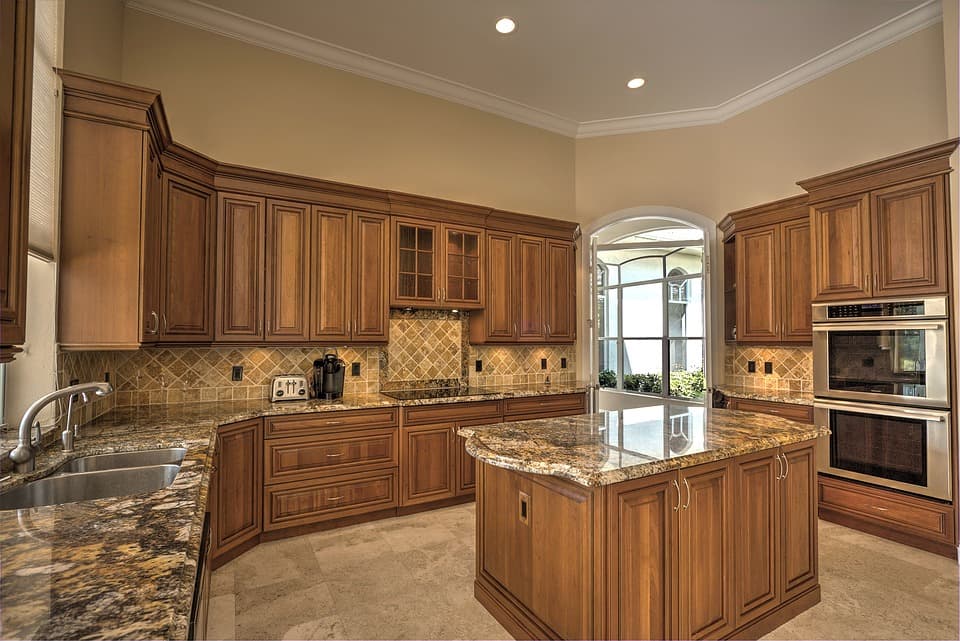Planning a Landscaping Project: Where to Start?
By Editorial Team
Updated on March 31, 2025

Designing a landscape can be both exciting and intimidating, especially given the wide range of available options. What plants are best suited to your regional climate? What kind of outdoor features, such as benches, fountains, or bird baths, can boost your backyard’s appeal?
What’s the best way to mix different plants and greenery to create a balanced garden? What steps should you follow to ace your landscaping project? How can you sidestep common exterior design mistakes?
This article guides you through the best practices to transform your outdoor space into a literal oasis.
What Are the Go-to Landscaping Design Steps?

Source : Terre à Terre Paysagement
1- Determine your backyard landscaping needs and wants
As mentioned in our introduction, a landscaping project can be daunting at first. Ideally, start by determining your landscaping needs and wants. What’s the most important aspect of your landscaping design? Consider the following questions:
Are you taking on the project for aesthetic purposes alone?
Does your family need more of a functional yard over one that’s aesthetically pleasing?
Are you looking to incorporate electricity-powered elements, such as a water feature, lights, or even an outdoor kitchen?
Do your pets need space to run freely?
What types of plants would you like to showcase in your backyard?
These questions can help you come a little closer to designing your backyard’s layout and functionality. Remember, you can create separate areas for different intended purposes as long as you use strategic planning and some hardscaping.
Furthermore, we’d suggest sketching your lawn or backyard to get a visual sense of how you intend to lay things out. It doesn’t need to be your final plan, but it'll allow you to make some informed decisions moving forward.
2- Familiarize yourself with your backyard’s specificities

Source : Soumission Rénovation
An important part of designing a landscape is knowing which plants are native to your region and will flourish in your backyard. Consider your regional climate, the topography of your yard, and the type of soil you’re working with. Most of this information can be found online, and if that doesn’t suffice, we suggest taking a trip to your local garden centre to consult a professional for a bit of insight into what will thrive and what won't.
Another factor to consider is that your yard will likely have very specific conditions and create a microclimate based on the amount of sunlight and shade it is exposed to. This will be a major consideration when it comes to determining the types of greenery that can thrive on your property. These microclimates fall into four categories: direct sunlight, partial shade, shade, or dense covering. Take note of these when drawing up a sketch of the areas you’re going to be working on.
Lastly, consider the topography and how water drains on your property. Bear in mind that the best landscape designs ensure water drains away from the home.
3- Consider landscaping design ideas
Choosing a theme for your landscape can be helpful when determining where plants and other features will sit. We suggest choosing a theme that fits your house’s architecture. If you consider landscape as an extension of the home, work with cohesive lines, patterns, and shapes. Are you looking to design a neat landscape featuring tidy geometric shapes? Or do you prefer softer lines and a nature-like vibe for your outdoor space?
As mentioned, think of your backyard as another room in your home. Just as the interior of your home features thoughtfully designed rooms, your landscape should be crafted with the same level of care. Use plants and other features to create separate spaces within a bigger one. These considerations can move you closer to a concrete landscaping plan.
4- Hardscapes and softscapes

Source : Soumission Rénovation
Before planting any greenery, we recommend starting with hardscaping features. Hardscaping can include a patio or porch, fencing, walkway or driveway, and so forth. In most cases, these are part of the construction phase and can damage turf, grass, or plants you’ve already grown.
By now, you've likely ascertained the types of plants that will thrive as part of your landscape and climate. Note that plants can be used as makeshift barriers, clearly defining and delimiting the yard's property line.
Low-growing plants can serve as effective barriers or borders, while taller plants help define specific areas. When strategically placed, plants and trees have the potential to completely transform your backyard. Additionally, consider factors such as temperature, sunlight, wind, and how sound travels, all of which play a role in shaping the environment of your space.
When planning the layout of your plants, consider the various levels within your backyard. Elevated landings are characterized by tall trees and greenery, while vertical landings refer to the arrangement of plants, including their spacing, the width of shrubs, and the height of low-growing clusters.
Lastly, consider the flowerbed landings in terms of how plants are grouped and arranged. Regardless of the plants you’re working with, remember to maintain a sense of cohesion throughout your landscaping design.
5- Start small, but consider your backyard's potential

Source : les portes et fenetres juva
If you still feel overwhelmed by it all, bear in mind that a huge part of taking a DIY approach to designing your landscape is not rushing the planning stages and having fun doing so. Don’t spend too much time thinking about how fast everything needs to get done. Take it day by day, one step at a time. Pay special attention to details, and you can only truly do so with a meticulous and balanced perspective.
Naturally, you’ll want to consider your landscape’s future potential. More precisely, think about how flowers, plants, and other greenery will fare over time. In other words, during the selection process, consider everything from their growth rate, maintenance requirements, and their full-grown size. Keep in mind that some plants might grow bigger or shrink when exposed to uncommon conditions.
Want more information about landscaping projects? Check out these articles:
FAQ About Landscaping
How to design a landscaping plan?
To design a landscaping plan, start by assessing your property (sun exposure, drainage, soil type). Outline your needs and intended use (playground, lounge area). Sketch a plan to scale, including functional areas, walkways, and climate-appropriate greenery.
What are the fundamental principles of landscaping?
The fundamental principles include:
Achieving balance (symmetrical or asymmetrical) for visual harmony.
Creating unity to ensure each feature fits with the mass.
Using rhythm and repetition to guide the eye naturally.
Maintaining proportions that respect the scale of the land and structures.
Ensuring a smooth transition between the areas for seamless visual continuity.
Looking for something else?
Related articles
The latest industry news, interviews, technologies, and resources.

Editorial Team
•23 Jul 2025
Your lawn and garden say a lot about you! Aside from leaving the first impression on visitors and those passing by, your landscaping enhances your home’s appearance and makes you proud of the place you call your own. With the right planning, careful maintenance and upkeep, you can have a near-perfect lawn.

Editorial Team
•31 Mar 2025
The trend of natural pools originated in Europe and has recently made its way to North America and other parts of the globe. The appeal of this concept is clear: instead of being filled with chlorine and chemicals, these pools are organically filtered.

Léa Plourde-Archer
•06 Jun 2025
Masonry and bricklaying are more than a skill, they are a craft. When it comes to the requirements for working with concrete and brick, you’ll need to work with a person who has specific training. These materials are especially difficult to manipulate, and thus, it’s almost always best to work with a professional. Of course, working with a mason or bricklayer will leave you with lifelong structures and pieces, adding to the individuality and resale value of your home.

Editorial Team
•19 Sep 2025
In a competitive market like construction and renovation in Quebec City, HVAC contractors need to stand out to land profitable projects. Whether you specialize in heating, ventilation, or air conditioning, this article presents concrete strategies to attract new clients and grow your business in 2025, while providing reliable and locally recognized service.

Léa Plourde-Archer
•07 Nov 2023
If you're thinking about changing your kitchen countertop, you may quickly realize that there are many options available. Amongst these, we can't forget to consider granite. Known for being elegant as well as original in terms of design, granite deserves your attention.